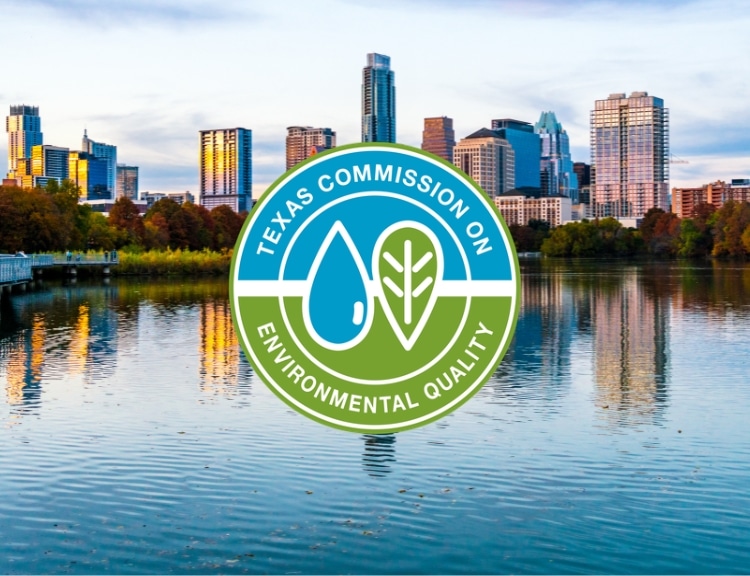Des Moines, Iowa is the capital of the state and has a population of about 215,000 people. Des Moines Water Works (DMWW), founded in 1871, serves Des Moines as well as a number of surrounding suburbs. The utility is publicly owned and governed by a board of trustees. It’s also unique in that its customers own the entire service line; that is, the pipe leading from the house to the box, and also from the box to the water main.
The challenge
When they began to compile a service line inventory, DMWW had no data on service line materials. This meant that leading up to the Oct. 16, 2024 Lead and Copper Rule Revisions (LCRR) inventory deadline, nearly their entire system – approximately 97,000 service lines – would be classified as “unknown.” As a result, the utility was facing a particularly heavy burden to meet the updated Lead and Copper Rule Improvements (LCRI) compliance requirements around identification and replacement as well as the annual customer notifications still in effect from LCRR.
DMWW also had to contend with uncertainty around utility vs customer responsibility for identifying and replacing lead service lines. For Jenny Puffer, Director of Water Distribution at DMWW, this uncertainty was especially challenging for them as they navigated federal and state requirements.
“It was really challenging for us as a utility, because of the service lines being entirely owned by the customer, we were unsure what our role we needed to be at first,” Puffer said. “Once we realized we were going to be responsible for determining the material of our customer’s private service lines, that’s where we realized we needed help. We can’t pothole all of those service lines. We have zero information. It’s not like we just have one part of town we don’t know. It’s the whole system we don’t know.”
DMWW lacked the staff and resources needed to dig up every line, and they knew that lead was more likely to be found under the street than in the house. Asking customers to verify their line materials would give the utility some information, but ultimately not help them locate the lead in an effective way. They needed a fast, accurate way to classify the lines in their inventory, with minimal information from their existing records.
The solution
DMWW decided to use predictive modeling to help manage unknowns and selected BlueConduit’s LSL Predictions solution for this work. Since 2016, BlueConduit has developed innovative technology tools and processes to use AI and machine learning to help utilities and engineering firms predict the likely volume and locations of lead service lines.
BlueConduit began working with Des Moines in January 2024. DMWW’s initial inventory of nearly 100,000 service lines was almost entirely classified as unknown, with only 2,000 lines being verified through a combination of field verification during normal utility operations, records of previous utility work, plumbing records, and construction records. The high number of unknowns meant the initial inventory did not contain a sufficient amount of representative data with which a reliable predictive model could be trained.
After reviewing these existing datasets, BlueConduit compiled a list of recommended field inspection sites to achieve a representative, randomized sample for the model. BlueConduit also enriched the provided inventory data with additional features including land value and public census data to provide demographics such as race and education level. These added features helped establish representativeness to build more effective models.
Given the utility’s constrained staff and resources, Puffer was pleased her team only needed to complete a small number of inspections to generate a lot of data.
“I was amazed how few potholes we had to do to get the data in the model,” she said. “We’ve done 300 to date and we’ve knocked out more than 50,000 [unknown] service lines. With our limited staff and resources, that’s been pretty powerful for us.”
The results
Des Moines conducted their field inspections in two batches, with BlueConduit’s LSL Predictions tool providing model-generated predictions after each batch. BlueConduit data scientists evaluated DMWW’s models across a range of metrics including precision, recall, specificity and false negative rate to recommend thresholds, or limits, to apply to all lines that fell under that threshold. For example, any lines greater than 70 percent likelihood of being lead would be classified in one category (e.g., “lead,” or “require physical inspection due to high likelihood of lead”). This process helped the water system determine which service lines to count as lead, galvanized steel or non-lead in the inventory.
Similarly, another threshold can be established for the lower end of the range of likelihood of lead. That lower threshold can be chosen so that all service lines with lead or galvanized steel likelihood less than this threshold would be in a different category (e.g., “not lead,” or “not requiring physical inspection due to low likelihood of lead”). Water systems typically find these lower thresholds especially valuable for inventory purposes because they can count service lines as non-lead for inventory purposes when the line’s likelihood is below a threshold.
These thresholds helped DMWW classify more than 70,000 service lines – eliminating their unknowns by nearly 75 percent in about six months.
What’s next
As the utility continues to work with new data and refine its models, it will focus on classifying its unknowns until every line has a designation. Once Puffer and her team have an accurate understanding of where the lead is, they can focus on planning for replacements more efficiently.
“This entire process has helped us realize that we really need the data to tell the story,” Puffer said. “It’s one thing to think you know where the lead is, to have a gut feeling, but it’s completely different to actually see the results in the model and see the data and the best practices behind the decisions we have to make as a water system. We are trying to do what’s in the best interest of our customers and our community, and do it quickly but effectively. BlueConduit has really helped us to do that.”
For more information on BlueConduit’s predictive modeling tools, visit www.blueconduit.com.





